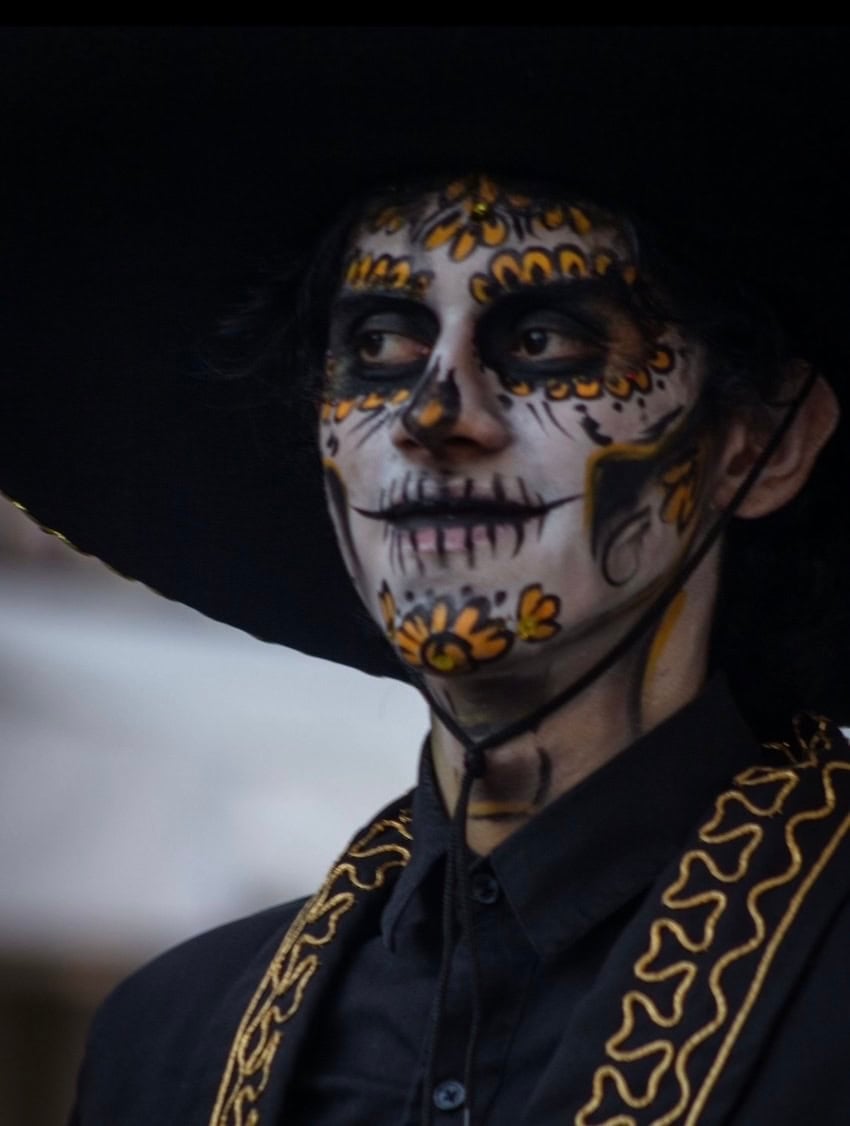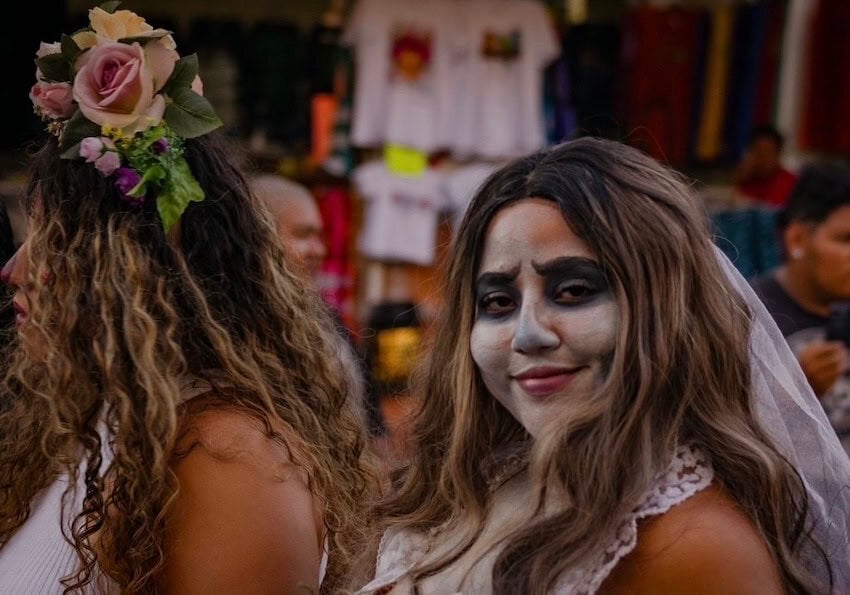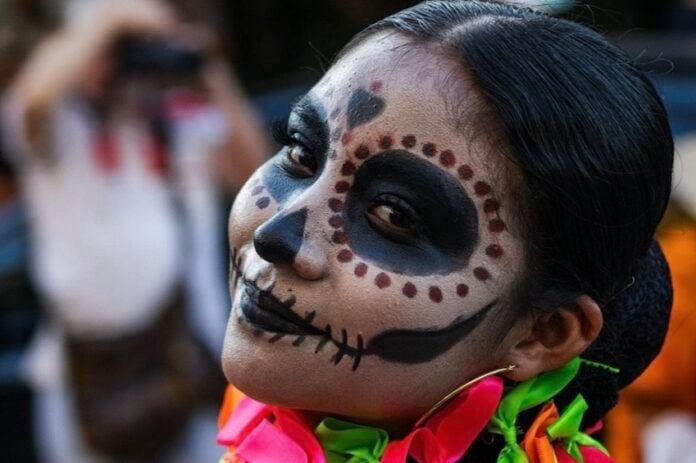As the days shorten and the golden light of late October gives way to November’s hush, something begins to stir across Mexico. The scent of marigolds fills the air. Streets bloom in orange and gold. Candles are lit, altars are built and doors, both real and invisible, are opened.
It’s Día de Muertos, the Day of the Dead. But this isn’t a time for mourning. It’s a time for memory, for music and for love. It’s a time for coming home.

At the heart of Día de Muertos is one beautiful, soul-stirring belief that once a year, the spirits of our loved ones return. Not in silence, and not as shadows. But in light, in color and in joy.
For a brief moment, the veil between worlds thins. The dead aren’t gone; they aren’t lost. They’re simply away, and now they’re being welcomed back home.
And we prepare for them as we would for any cherished guest. Homes are cleaned. Tables are set. Ofrendas — altars of offering — are lovingly built.Candles flicker beside framed photographs. Bread and tamales are laid out alongside bottles of mezcal or soda, a favorite book, a rosary or a toy. Every object is a whisper: “You’re still ours. Please come home.”
This celebration, so vibrant and tender, reaches back more than 3,000 years to the peoples of pre-Columbian Mesoamerica.
Among the Aztecs and other Nahua civilizations, death wasn’t seen as an end, but as a continuation. It was a passageway in the great maze of existence. Life and death were sisters, not strangers.
They believed that when someone died, their soul began a long journey through Chicunamictlán, the Land of the Dead. It was a path of challenges and transformations that could take years. Only after this pilgrimage could the soul find rest in Mictlán, the final resting place.

When Spanish Catholicism arrived in the 16th century, these ancient beliefs were woven together with Christian teachings. The result was something layered and luminous — the Día de Muertos we know today.
Officially, the celebration spans two days. November 1, Día de Todos los Santos (All Saints’ Day), honors the souls of children. November 2, Día de Muertos itself, welcomes adults who’ve passed on.
But in many places, remembrance begins earlier, on October 27, with days set aside for souls lost to accidents, to drowning, to violence. There are days that remember the forgotten and beloved pets. Each soul is given space and is worthy of light.
The ofrenda is the heart of every home during Día de Muertos. More than a memorial, it’s a bridge to reach across the unseen.
Each element, the salt, water, fruit, pan de muerto, and papel picado, is chosen with care and intention. These offerings don’t just symbolise the past, they nourish and guide. They speak.
Most striking of all are the cempazúchitl, Mexican marigolds. Their bold orange petals are said to attract spirits. Their scent, it’s believed, helps guide loved ones home. Families often lay trails of marigold petals from the street to the door as a means of creating bright, fragrant paths that say, “This way. We’re here. Come in.” It’s not superstition. It’s the sacred hospitality of memory.

There’s nothing gloomy here. Instead, there’s music, laughter, candlelight and storytelling.
Graves are swept and decorated. Families gather with guitars and baskets of food. Children play among the headstones. And when night falls, cemeteries glow with hundreds of candles, each flame a flicker of love.
Skeletons are everywhere, but they don’t frighten. They smile. They wink. They wear suits and gowns. They remind us that death comes for everyone, but it doesn’t have to be feared. La Catrina, the iconic skeletal lady in her feathered hat, is elegant, not grim. She doesn’t carry a scythe, she carries a smile.
To confront death this way — with warmth, with humour, with color — is an act of cultural courage. It says that death may come, but love remains. Voices may fall silent, but their echoes carry on.
No celebration is complete without food, and Día de Muertos is rich with flavor. Most iconic is pan de muerto, a soft, sweet bread often shaped with bones and dusted in sugar. It’s eaten with hot chocolate or the hot drink, atole, and is always placed on the altar as a gift for the returning spirits.
Tamales, mole, sugared skulls and favorite drinks all find their way onto the ofrenda. It’s not just a tradition, it’s a reunion at a sacred picnic shared across time.
I’m not a religious person, but I’ve stood before an ofrenda and felt something like reverence. Or peace. There’s a quiet wisdom in this celebration. It reminds us that death isn’t the opposite of life, it’s part of it. It reminds us that we’re made of those who came before us, and that we’ll live on in those who come after. The idea that someone might return when we remember them, that memory itself becomes a doorway, is deeply comforting.
In the end, Día de Muertos isn’t just for the dead, it’s for us. It asks us to live well, to love deeply, and to leave behind stories worth telling and gestures worth repeating. It asks us to be the kind of people someone might build an altar for. And maybe one day, they will. Maybe someone will place our photo in a frame, light a candle in our honor and say our name out loud.
We’ll find our way back — drawn home by memory, by light and by love.
Charlotte Smith is a writer and journalist based in Mexico. Her work focuses on travel, politics, and community. You can follow along with her travel stories at www.salsaandserendipity.com.
